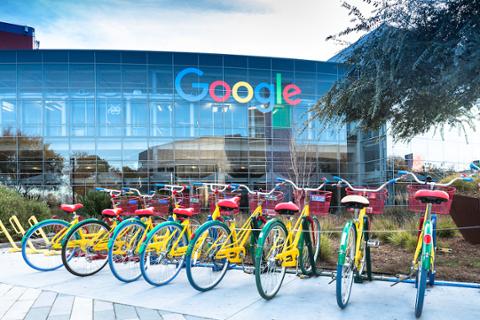Over the past several months, technologists have shown their resilience in the face of uncertain situations. However, that constant diligence and adjustment can take a sizable mental toll, and many companies are doing their best to take that into account when designing employee-outreach programs.
Google, which has developed many employee programs that other tech firms emulate, has come up with a new method for helping their workforce through this sometimes-chaotic period: ‘Resilience training’ videos. In an interview with CNBC, Lauren Whitt, a “wellness manager and resilience lead” at Google, suggested that these short videos feature athletes, coaches, and psychologists offering tips on everything from good sleep habits to curbing anxiety.
“Video content around breathing and sleep are the most meaningful ways we can rest and recover as well as momentary detachment throughout the workday,” Whitt told the network.
Obviously, not every company has the money and bandwidth to produce a series of videos advising employees on mental balance. Nonetheless, employers and technologists can develop strategies to better endure through tough times. Whether you’re a star athlete or a software developer, resilience is something you can train for.
For example, Google utilizes something called “TEA check-ins” (where the TEA stands for Thoughts, Energy, and Attention) where managers are encouraged to discuss whatever is on their employees’ minds. That allows the company to adjust schedules and offer other kinds of support to employees who need it.
In addition, Google has issued a series of virtual classes for cooking and other leisure activities, which allows employees to connect with each other in addition to participating in something fun.
But I don’t work for Google, you might be saying. How can my manager and I replicate all this wonderful stuff? Fortunately, there are solutions for you, too.
Avoiding Burnout in a Very Odd Year
Google has begun to embrace one strategy that pretty much anyone can emulate: “no meeting” periods, whether a specific day or an entire week. Google CEO Sundar Pichai announced that the week of December 28 would be meeting-free for Googlers (with some exceptions, such as those trying to hit hard deadlines).
Lots of folks are on vacation that week anyway, which makes Pichai’s proclamation pretty low stakes. But it’s important to note (as a team of researchers at Microsoft did, when they studied employees’ work-life balance during the COVID-19 pandemic), that, over the past several months, many technologists have ended up in more meetings while working remotely. Some of that is a consequence of working from home, when teams more frequent contact in order to ensure that everything is on-track; but it’s also a reflection of the relatively frictionless nature of booking video conferences, tempting some folks to schedule meetings when an email or text message would do.
If you’re feeling burned out, consider proposing a “no meeting” period. By explaining to your supervisor that such a meeting-free span could allow you to focus on work, you have a better chance of receiving approval.
Related to that, it’s also key to establish firm scheduling boundaries. Let your team and your manager know your working hours, and making a point of sticking to those. If you have set periods where you’re “on the clock,” you’re less likely to be booked into tasks that’ll slowly expand the length of your workday. In similar fashion, if you’re taking a “staycation” this year in order to burn your unused PTO, make a point of informing all relevant colleagues of the days you’re taking off.
As highlighted by Google’s resilience videos, sleep and exercise are particularly important when it comes to avoiding burnout—but as with so much else in life these days, you’ll need to make a point of aggressively keeping those sleep and exercise periods free of any outside interference.
If you’re managing a team, frequent and proactive check-ins are a must. You can also emulate Google’s strategy and offer some resources of your own to your team members, whether fun videos or websites with handy tips for relaxing. It might be a long winter; keep everyone’s mental resilience front-of-mind.



